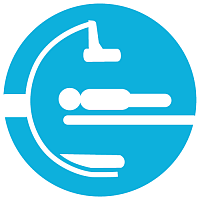3D ablation margin analysis
Thermal ablation, such as radiofrequency ablation (RFA), microwave ablation (MWA) and cryoablation, is a therapeutic modality that uses heat or cold to locally destroy cancerous cells. Under image-guidance, one or more small needles are typically inserted through the skin precisely into the tumor, resulting in precise tumor ablation but sparing as much healthy surrounding tissue as possible. Thermal ablation is a well-established minimally-invasive treatment for treating lesions in the liver, kidneys, prostate and lungs.
However, despite its proven effectiveness, previous studies have shown that thermal ablation is associated with a considerable risk of local tumor recurrence. To further decrease this risk and improve patient outcomes, achieving a sufficient ablation margin surrounding the treated tumor is paramount. For example, a minimum margin of 5 mm between the tumor border and ablation zone is the minimum requirement for treatment of colorectal liver metastasis with thermal ablation.
Currently, the best method to immediately assess if the minimum ablation margin is obtained is through by side-by-side comparison of the intraprocedurally obtained CT scans. By comparing the tumor on the pre-ablation scan with the ablation zone on the post-ablation scan and by applying image fusion, a good estimate of the minimum margin can be made by the physician. The disadvantages of this method are inter-user variability and subjective decision-making.
Therefore, we strive towards the first-time-right treatment with thermal ablation by intraprocedurally quantifying the minimum ablation margin. The ablation margin can be quantified by creating 3D segmentations of the tumor and ablation zone on the intraprocedural scans. However, creating these segmentations manually is time-consuming and also susceptible to inter-user variability. The goal is to develop artificial intelligence (AI) models that can quickly and accurately create segmentations for the tumor and ablation zone. With these models, intraprocedural assessment of the minimum margin would become feasible.
The MAGIC group is currently particularly focusing on 3D margin analysis of liver and prostate tumors treated with thermal ablation.









